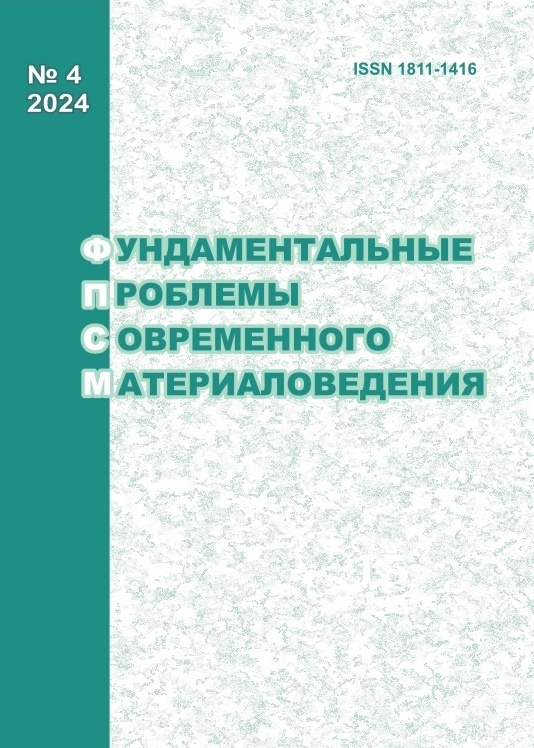ANISOTROPY OF MECHANICAL PROPERTIES OF INTERMETALLIC Ni–Al–Cr PRODUCED BY DUAL-WIRE ELECTRON-BEAM ADDITIVE MANUFACTURING
10.25712/ASTU.1811-1416.2024.04.003
Keywords:
electron-beam additive manufacturing, NiCr alloy, Al, intermetallic, mechanical propertiesAbstract
We investigated the phase composition and mechanical properties of an intermetallic alloy of the Ni–Al–Cr system obtained using a dual-wire electron beam additive manufacturing. Alloy billets were obtained by simultaneously feeding industrial wires of nichrome alloy and aluminum into the melting pool. It was shown that the resulting material has a dendritic microstructure that is heterogeneous in phase composition, consisting mainly of phases based on Ni3Al and Ni3Cr. In this case, the resulting alloy is characterized by a weak anisotropy of an yield strength and an ultimate tensile strength in the temperature range 300-1273 K and plasticity at temperatures below 1073 K. At mechanical test temperatures higher than 1073 K, samples oriented along the deposition direction are characterized by greater plasticity than those whose tensile axis coincides with the building direction, which is associated with the peculiarities of the phase composition and morphology of dendrites in the additively produced material. It has been shown that the best combination of strength and ductility in additively produced alloy of the Ni–Al–Cr system is observed in the tensile temperature range of 673-873 K. The intermetallic alloys under study are designed for the production of intermetallic coatings using electron beam additive manufacturing.











 Journal «Fundamental’nye problemy sovremennogo materialovedenia / Basic Problems of Material Science»
Journal «Fundamental’nye problemy sovremennogo materialovedenia / Basic Problems of Material Science» This work is licensed under a
This work is licensed under a 
